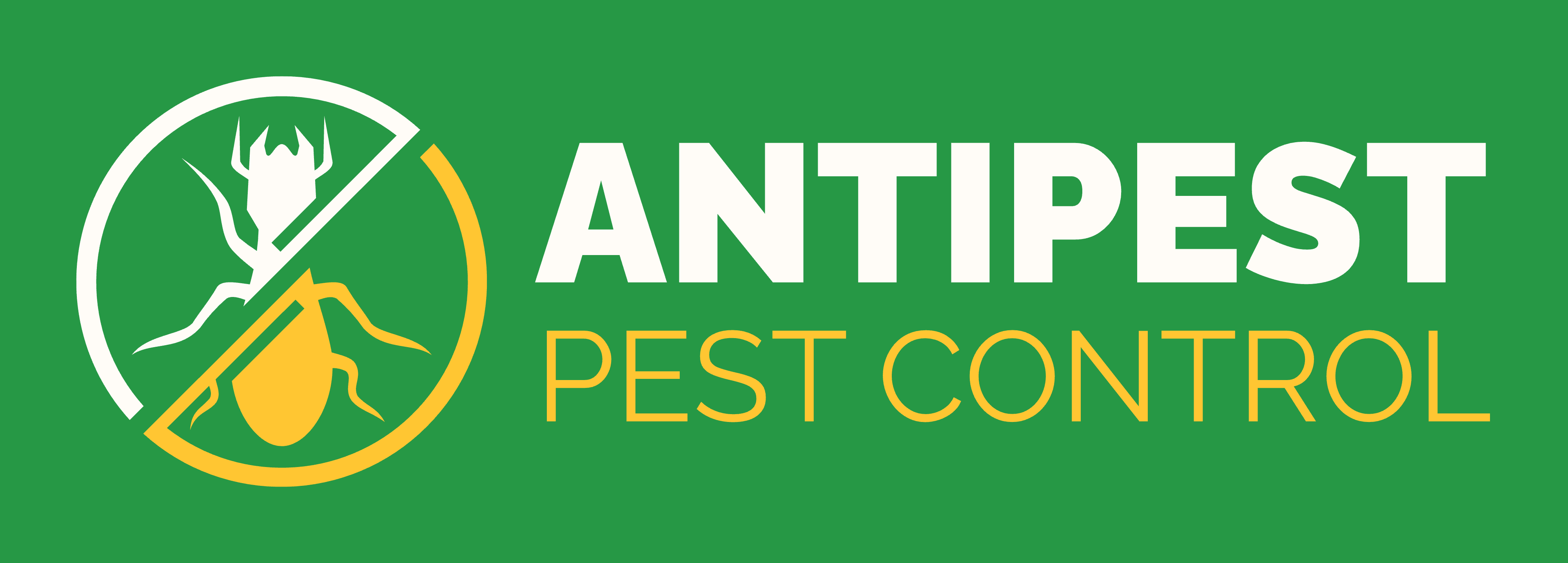Ants inside a rice container are annoying, but the good news is there are safe, practical steps for how to remove ants from rice quickly and prevent repeat invasions. If a bag was left open, a jar wasn’t airtight, or the pantry attracted moisture and crumbs, learning how to remove ants from rice protects food safety and stops contamination from spreading.
This guide shows how to remove ants from rice with gentle, kitchen‑friendly methods, when to discard, and how to set up airtight storage so it doesn’t happen again. Ever noticed tiny ants floating after rinsing rice or marching along the sack seam? Those moments are exactly when knowing how to remove ants from rice pays off.
Table of Contents
Why Ants Invade Rice?
Ants seek carbs, easy access, and consistent odor trails from spills or open packaging. This section explains why understanding how to remove ants from rice starts with recognizing what drew them in. Warm pantries, paper bags, and faint syrup or oil residues can bring workers straight to grains. Once inside, trails solidify, and colonies return to the same stash unless storage and sanitation change.
- Starches and residual smells attract scouts that recruit others.
- Paper sacks and loose lids allow easy entry and nesting.
- Humidity and warmth amplify scent trails and soften packaging.
- Nearby sweets or pet food bowls intensify ant traffic patterns.
Common types of “rice ants” and look‑alikes
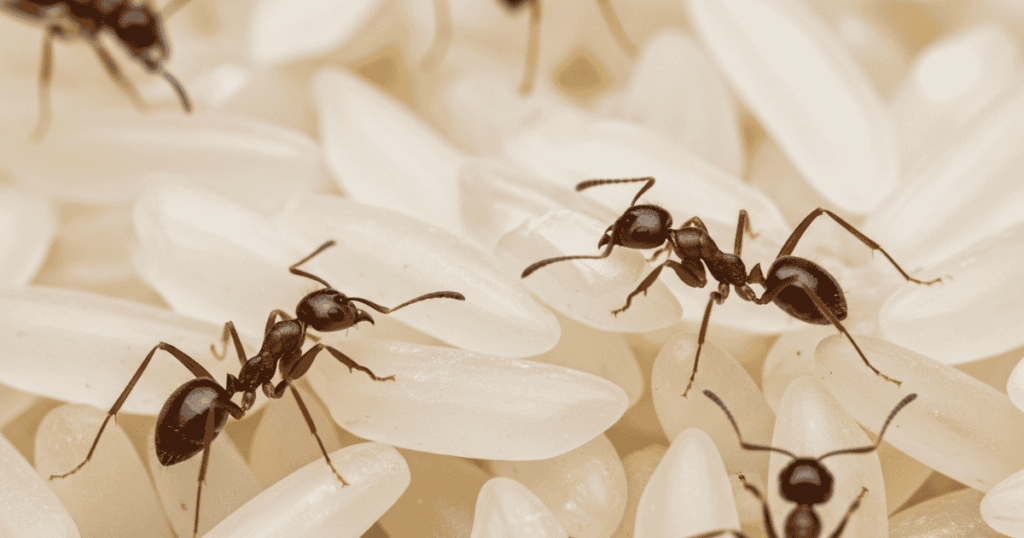
How to remove ants from rice benefits from correct ID, since tactics differ for ants versus stored‑product pests often found alongside grains.
- Pharaoh ant (tiny, yellow‑brown): Prefers sweets and oils; avoid repellent sprays that cause colony budding; choose slow‑acting baits while practicing how to remove ants from rice via discard, freeze, and re‑jar steps.
- Ghost ant (tiny with pale abdomen and legs): Trails to sugary residues; gel baits and tight sealing pair well with how to remove ants from rice and then secure containers.
- Argentine ant (small brown, heavy trails): Responds to carbohydrate baits; perimeter sealing supports how to remove ants from rice without repeated incursions.
Look‑alikes in rice that are not ants:
- Rice weevil and related snout beetles: Bore into whole grains; household “how to remove ants from rice” becomes “freeze or discard, deep clean, airtight re‑pack.”
- Saw toothed grain beetle and flour beetles: Prefer processed grains; the response mirrors how to remove ants from rice, discard infested items, sanitize shelves, and repackage.
Rice Ants Identification table
| Pest | What it looks like | What it does | Response aligned with how to remove ants from rice |
| Pharaoh ant | Tiny, yellow‑brown | Sugar trails; colony splits if disturbed | Use gel baits; no sprays in pantry; airtight storage |
| Ghost ant | Tiny, pale abdomen | Trails to sweets/oils | Baits + sealing; sanitize shelves |
| Argentine ant | Small brown lines | Persistent foraging | Baits; exterior sealing; dry pantry |
| Rice weevil | Small snout beetle | Inside whole grains | Discard/freeze; deep clean; airtight jars |
| Sawtoothed grain beetle | Tiny flat brown | In processed grains | Discard, sanitize, repackage |
By combining safe bait placement away from food, airtight storage, weekly cleaning, and humidity control, how to remove ants from rice becomes a straightforward workflow: isolate, assess, discard or freeze, re‑jar, and block re‑entry.
Quick Methods: How to Remove Ants from Rice Right Now?
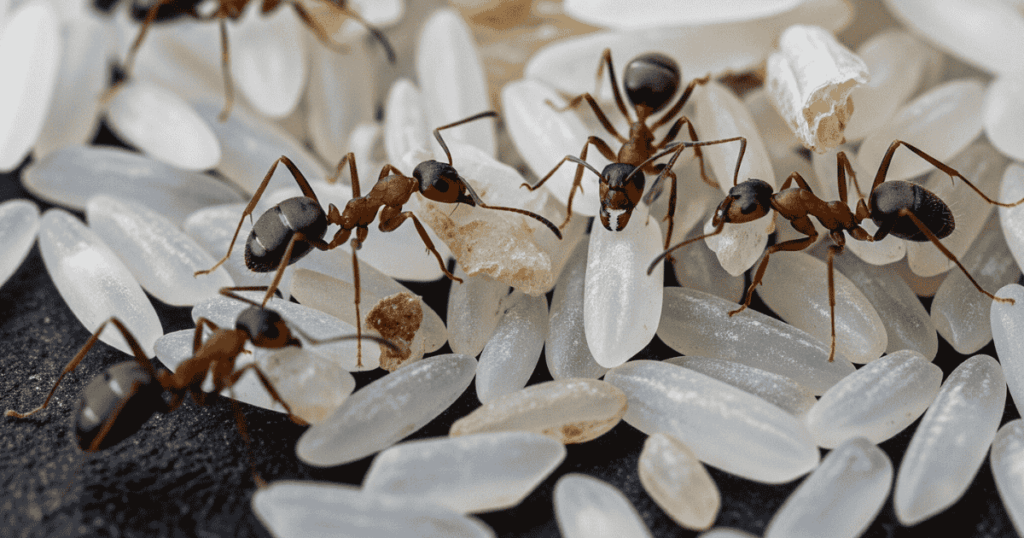
When time is short, these techniques for how to remove ants from rice are fast and kitchen‑safe. Use one or combine them based on how many ants are present.
- Cold separation: Pour rice onto a large plate and refrigerate 20–30 minutes; cold slows ants, making it easy to brush or lift them off with a card.
- Rinse and float: Place rice in a wide bowl, add cool water, and swirl; ants float and can be skimmed off; drain through a fine sieve and repeat two or three times.
- Sieve and tap: Use a fine mesh strainer over a tray; shake gently so ants fall away; follow with a rinse if cooking immediately.
- Paper cone lure: Create a paper funnel and place a sweet bait (a dot of honey) away from the bowl; moving ants climb off rice toward the bait within minutes.
Tool and Time Matrix
| Method | Tools Needed | Time | Best For |
| Refrigerate and brush | Plate, card | 20–30 min | Small to moderate ant presence |
| Rinse and float | Bowl, sieve | 5–10 min | Cooking rice right away |
| Sieve and tap | Fine strainer | 3–5 min | Dry separation before storage |
| Paper cone lure | Paper, tiny honey drop | 10–20 min | Gentle diversion without water |
Safety First: Keep or Discard?
Before deciding how to remove ants from rice, check contamination and packaging integrity. Light surface activity can often be managed, but heavy infestation requires discarding.
- Keep if: A few ants are visible, no mold or off‑odors, original packaging dry and intact inside a secondary container.
- Discard if: Ants are widespread inside grains, wet clumps, musty smell, or mixed with other pantry pests (weevils, moth larvae).
- If uncertain,err on safety; food cost is less than health risk.
- When discarding, seal the waste bag and remove it outdoors immediately.
Decision Table: Keep or Discard
| Condition | Action | Reason |
| A few ants visible on top | Keep after removal | Likely superficial; manageable with separation and rinsing |
| Ants throughout grains | Discard | Deep penetration and possible contamination |
| Wet rice or off‑odor | Discard | Moisture and microbial risk |
| Torn paper sack only | Repack airtight and monitor | Access point fixed; watch for stragglers |
Gentle Household Remedies (No Chemicals on Food)
These options focus on how to remove ants from rice without exposing grains to chemicals. Any scent‑based item should be used around the container, not directly on rice.
- Freezing isolation: Seal the container and freeze 24 – 48 hours; kill ants; thaw sealed to avoid condensation; then sieve to remove debris.
- Sun and sift: In dry weather, spread rice on a cloth under indirect sunlight 30 – 60 minutes; ants disperse; sift back into a clean, airtight jar.
- Barrier placement (around, not on): Bay leaves, cloves, or cinnamon sticks near the storage area discourage reentry; keep them outside the food container unless double‑bagging.
- Jar transfer: Move rice into a wide‑mouth glass jar; wipe the rim with a vinegar‑damp cloth (rim only, then dry); fit a tight lid; ants left outside can be cleaned away.
Pro tip: For repeated incidents, pair freezing isolation with jar transfer. That combination consistently supports how to remove ants from rice and keep it protected long‑term.
Deep Clean and Reset: Stop Trails and Reinfestation
Even after mastering how to remove ants from rice, colonies return unless scent trails and entry points are erased. This pantry reset prevents that.
- Empty and vacuum shelves, especially seams and corners.
- Wipe surfaces with a 1:1 vinegar‑water solution; dry fully.
- Fix sticky leaks, syrup rings, or oil drips; clean containers and scoops.
- Elevate sacks in bins; avoid placing bags directly on the floor.
- Use airtight containers for all grains, flours, and snacks.
Pantry Reset Checklist
| Task | Frequency | Notes |
| Vacuum corners and shelf seams | Weekly at first | Removes crumbs and ant pheromone trails |
| Vinegar‑water wipe down | Weekly | Cuts scent paths without harsh residues |
| Inspect for open packages | Weekly | Reseal or transfer to airtight jars |
| Check moisture and leaks | Weekly | Reduces attractants and packaging softening |
Storage That Works: Airtight, Dry, and Organized
Solid storage is the backbone of how to remove ants from rice and keep it that way. Prioritize seals, dryness, and clear labeling.
- Use rigid, airtight containers (glass or high‑quality plastic with silicone gaskets).
- Add a food‑safe desiccant pack outside the inner rice bag to keep the container dry.
- Label purchase dates and rotate stock (first in, first out).
- Keep a dedicated scoop; never scoop with damp cups.
- For bulk rice, break into smaller jars so only one jar is opened at a time.
Container Comparison Table
| Container Type | Seal Quality | Durability | Notes |
| Glass jar with gasket lid | Excellent | High | Inert, easy to clean, visible contents |
| Locking plastic bin (BPA‑free) | Good–Excellent | High | Lightweight, stackable |
| Thin zipper bags | Fair | Low | Use only inside a rigid bin |
| Original paper sack | Poor | Low | Transfer immediately to airtight storage |
Natural Repellents and Safe Perimeter Tactics on How to Remove Ants from Rice?
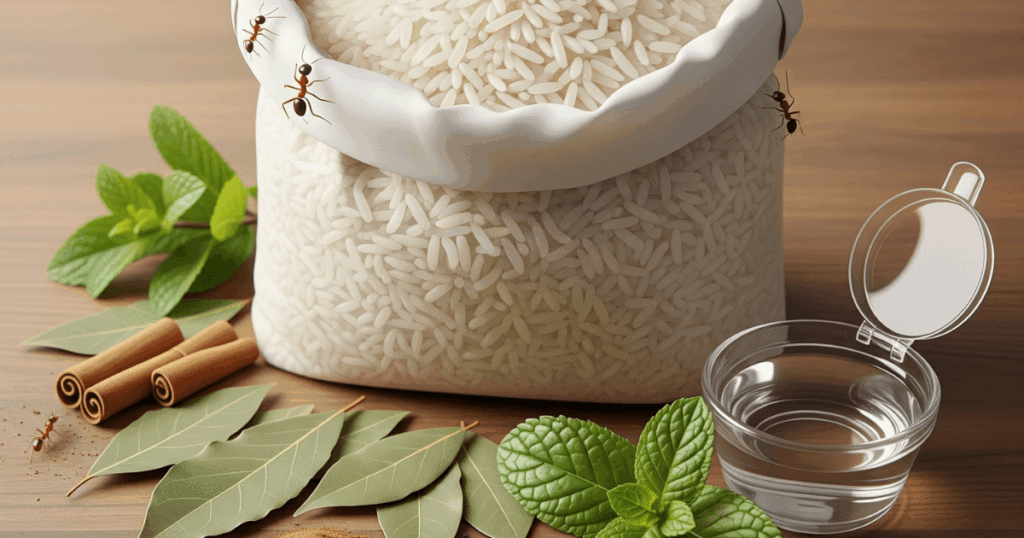
To reinforce how to remove ants from rice beyond the jar, use natural deterrents and safe perimeter tactics in the pantry area, not on the food itself.
- Vinegar rim wipe (dry afterward) and shelf cleaning reduce trail strength.
- Whole bay leaves or clove pods in corners discourage exploration.
- A thin chalk line or food‑safe diatomaceous earth placed under shelving (away from food contact) can deter crossing.
- Seal entry gaps with silicone or weatherstripping; keep doors and windows screened in warm seasons.
“Protect your home, car, and belongings from every kind of ant,white ants, carpenter ants, sugar ants, red ants, and more, with expert tips and proven solutions for prevention, elimination, and lasting control. Take action now to reclaim your space and live pest-free!”
Note: Avoid applying essential oils directly to containers that contact food; if used, apply to a cotton ball placed in a separate dish on the shelf.
Prevention Tips: How to Remove Ants From Rice Permanently
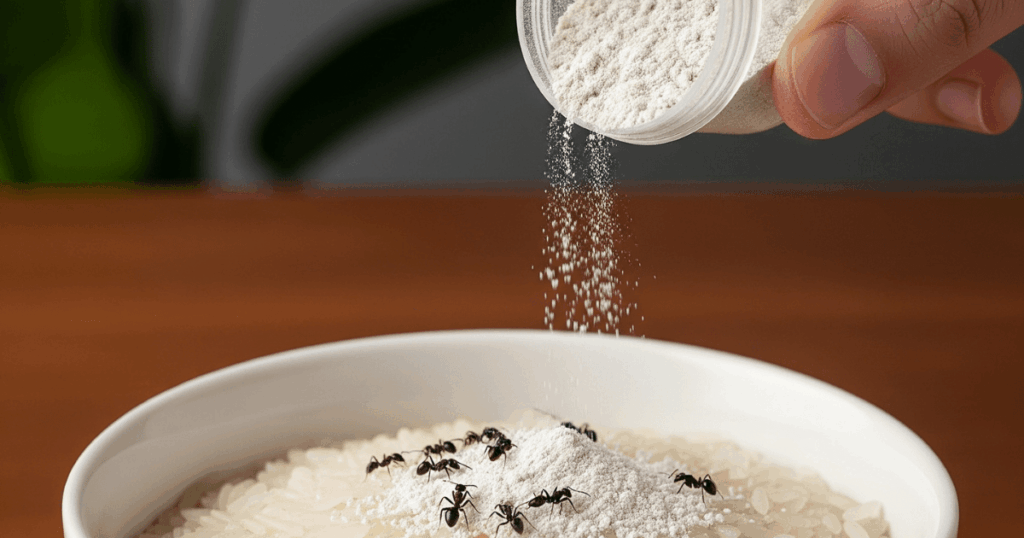
How to Remove Ants From Rice Permanently starts with airtight storage in clean, dry containers instead of paper sacks. Keep your pantry dry and crumb‑free by wiping shelves regularly and sealing cracks where ants enter. Use natural deterrents like bay leaves or cloves around jars, not inside food. Good rotation, dry scooping, and regular inspections ensure rice stays fresh and ant‑free for the long term.
1. Seal and Store Smartly
- Always transfer rice from paper sacks into airtight containers (glass jars, steel tins, or BPA‑free plastic bins with gaskets).
- For bulk rice, divide into smaller jars, only open one at a time to reduce exposure.
- Never leave rice bags directly on the floor; place them on shelves or in storage bins.
2. Keep the Pantry Dry and Clean
- Ants are drawn to moisture and food residues. Wipe pantry shelves weekly with a vinegar–water solution (1:1).
- Vacuum or brush shelf corners and seams to remove crumbs that form scent trails.
- Maintain low humidity; use silica gel packets or dehumidifiers in damp climates.
3. Block Entry Points
- Seal gaps, cracks, or holes around pantry shelves, skirting boards, or walls with caulk/silicone.
- Make sure windows and doors nearby are fitted with fine mesh screens.
4. Use Natural Ant Deterrents
- Place bay leaves, cloves, or cinnamon sticks near rice containers (outside jars, not inside food).
- Chalk lines, food‑grade diatomaceous earth, or cotton balls with vinegar/peppermint oil placed on pantry shelves make natural ant barriers.
5. Practice Good Kitchen Habits
- Wipe spills immediately, especially sugary syrups, oils, or pet food crumbs.
- Always use a dry scoop for rice, damp cups can add moisture and attract pests.
- Rotate rice stock with a first‑in, first‑out system, so older grains get used before newer ones.
6. Regular Checks and Maintenance
- Inspect rice and other grains once a week for any movement or clumps.
- If one jar is infested, freeze it or discard promptly to prevent spread.
- Keep other dry foods (flour, sugar, cereals, pulses) in airtight containers as well , ants spread between items.
7. Outdoor & Household Measures
- Trim plants touching exterior walls (ants use them as bridges).
- Keep garbage bins sealed and emptied regularly.
- If ants persist, use safe baits outside the pantry, not near the rice.
When Ants Persist: Target the Source, Not the Rice
If ants keep appearing, the real fix is to cut off what draws them. This section complements how to remove ants from rice by eliminating colony incentives.
- Remove standing water and sticky residues; wipe bottles and jars.
- Store sweets, pet food, and fruits in sealed containers.
- Use baits outside the pantry zone (follow label directions) to target colonies safely away from food.
- Trim vegetation touching exterior walls and seal exterior cracks.
- Consider a professional inspection if trails originate behind walls or under flooring.
Attractant vs. Action Table
| Attractant | What to Do |
| Syrup/oil drips | Clean bottles; use drip trays |
| Open sweets & snacks | Transfer to airtight jars |
| Damp shelves or leaks | Fix plumbing; use a dehumidifier |
| Wall or floor gaps | Seal with caulk; maintain thresholds |
Cooking After Removal: Rinse, Inspect, and Proceed
Once the process of how to remove ants from rice is complete, a clean rinse and inspection prepare grains for cooking.
- Rinse thoroughly in a fine sieve until water runs clear.
- Inspect for any debris; repeat a quick float‑and‑skim if needed.
- Cook as usual; if any doubt remains, choose a fresh, sealed batch.
Common Mistakes to Avoid When Removing Ants from Rice
Mistakes can make ant problems worse. Avoid these errors to ensure “how to remove ants from rice” never becomes a recurring hassle:
- Leaving rice containers unsealed
- Ignoring pantry cleaning after removing visible ants
- Storing rice in humid or sunlit places
- Using harsh chemical sprays directly on food
- Not discarding all visibly infested grains
Paying attention to storage hygiene and regular inspections is key for long-term ant-free rice.
When to Call a Professional for Removing Ants from Rice?
Knowing when to call a professional for removing ants from rice is essential when infestations persist despite home cleaning, airtight storage, and DIY treatments. If ants keep coming back or appear alongside other pantry pests, professional pest control experts can thoroughly inspect, identify, and treat colonies to protect your rice and pantry. For lasting, safe results in managing ant problems, rely on professional help to remove ants from rice efficiently.
- Severe or persistent ant infestations despite cleaning and airtight storage
- Multiple pantry pests like rice weevils or grain beetles present
- Visible mold, musty odors, or widespread contamination
- Recurring ants that resist rinsing, freezing, and baiting
- Difficulty locating or eliminating ants hiding in walls or cracks
- Health risks from contamination and pest spread
- After DIY efforts fail, professional pest control offers effective, safe solutions
For comprehensive and hassle-free ant removal and long-term pest prevention, trust the professionals at Antipest Office. Visit us at the Antipest Office, Our trained technicians use safe and effective methods to protect your home and business. For service bookings and consultations, call us at +91 9819018398 .
Conclusion
Knowing how to remove ants from rice is only half the solution; the other half is preventive storage and a clean, dry pantry. Choose airtight containers, maintain weekly wipe‑downs, and block reentry points. When grains are protected by design, ants move on to easier targets. With these steps, the routine of how to remove ants from rice becomes rare instead of repeated.
The most reliable approach to how to remove ants from rice blends fast separation (sieve, rinse, refrigeration) with long‑term fixes (airtight storage, pantry cleaning, sealing gaps). Build habits that cut scent trails, keep grains dry, and reduce attractants, and the need for how to remove ants from rice drops dramatically. A clean, sealed pantry is the lasting answer to how to remove ants from rice.
How to Remove Ants from Rice? – FAQs
How to remove ants from rice quickly?
Use a wide bowl, add cool water, swirl to float ants, skim them off, then drain through a fine sieve and repeat two or three times.
How to remove ants from rice without chemicals?
Freeze the sealed container 24–48 hours, thaw sealed, then sieve; or refrigerate 20–30 minutes, brush ants off, and transfer to an airtight jar.
How to remove ants from rice and keep rice safe to eat?
If activity is light, separate ants via rinse or sieve, then cook; discard rice if infestation is heavy, wet, or smells musty.
How to remove ants from rice using household items?
Use a fine strainer, a large plate for refrigeration, and a paper cone with a tiny honey dot to divert ants off the grains.
How to remove ants from rice in bulk bags?
Break bulk into smaller airtight jars, freeze each jar once, then store cool and dry; open only one jar at a time to avoid re‑entry.
How to remove ants from rice and stop them returning?
Clean shelves with vinegar‑water, seal gaps, store all grains airtight, and eliminate syrup or oil residues that strengthen ant trails.
How to remove ants from rice if I plan to cook immediately?
Rinse and float ants off, drain in a sieve, and cook; this fast method removes ants effectively before boiling or steaming.
How to remove ants from rice if there are many ants?
Discard heavily infested rice; if salvageable, freeze sealed 48 hours, then sieve and reset pantry with airtight storage and cleaning.
How to remove ants from rice using natural repellents?
Place bay leaves or cloves on pantry shelves (not inside food), wipe rims with vinegar (dry after), and keep containers airtight.

